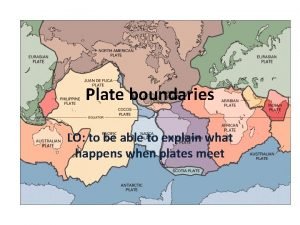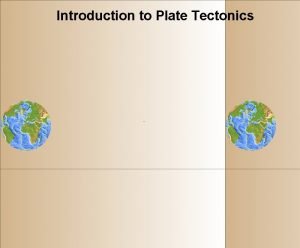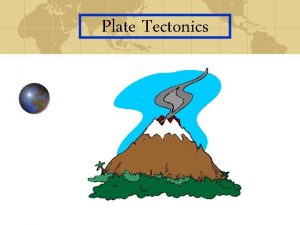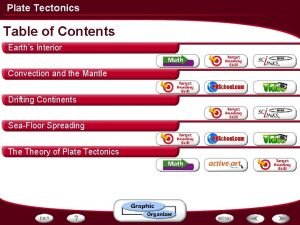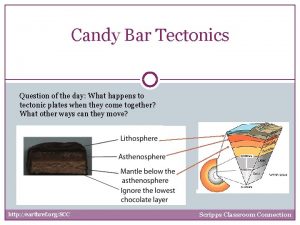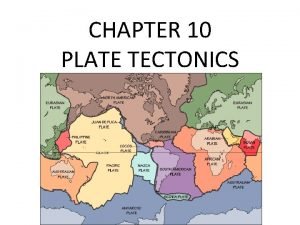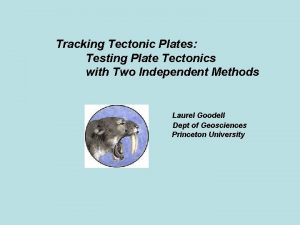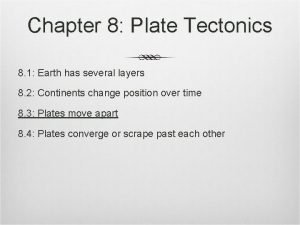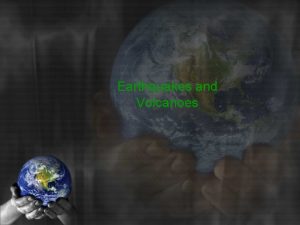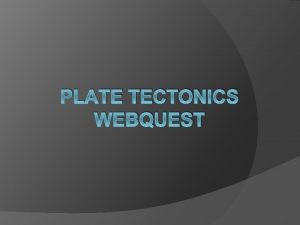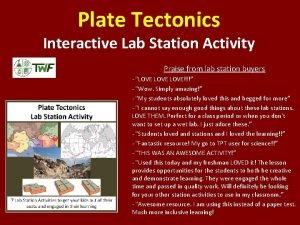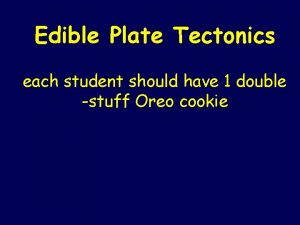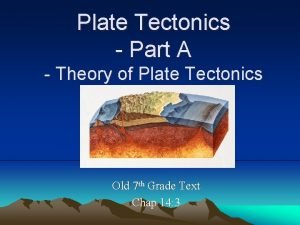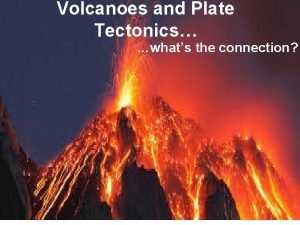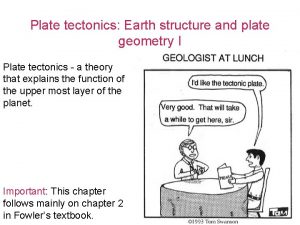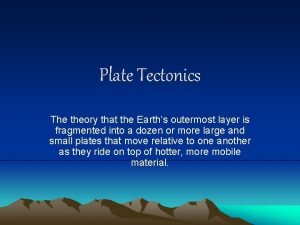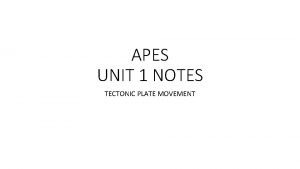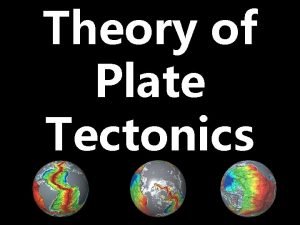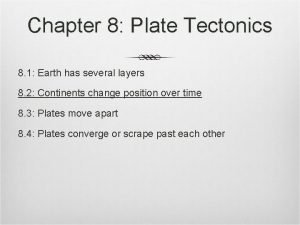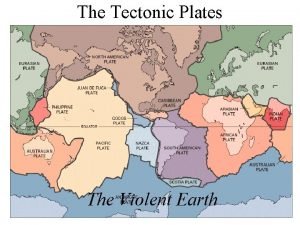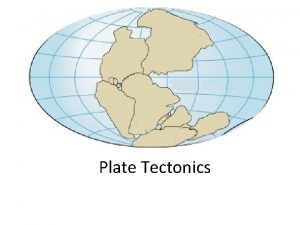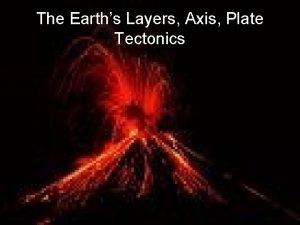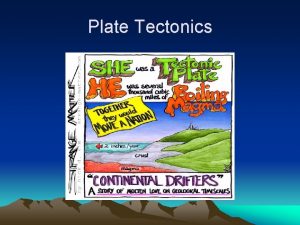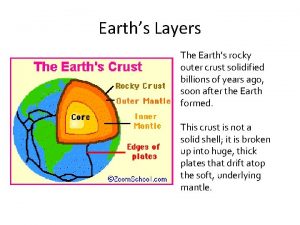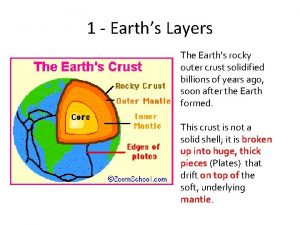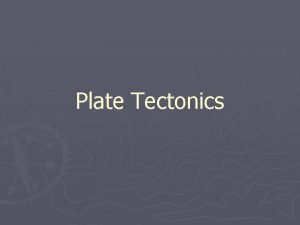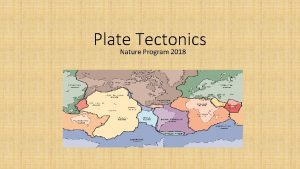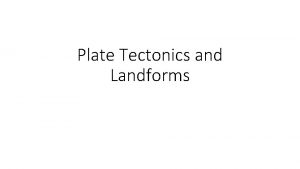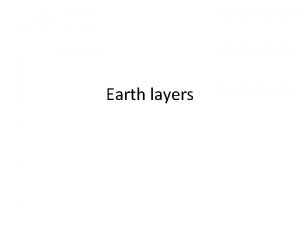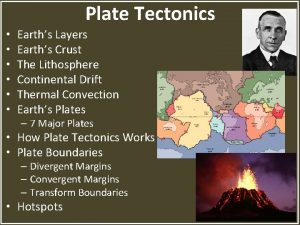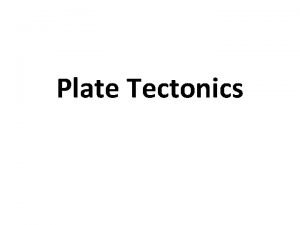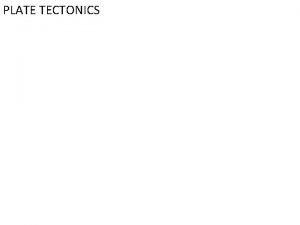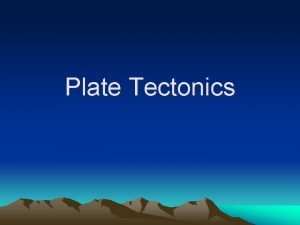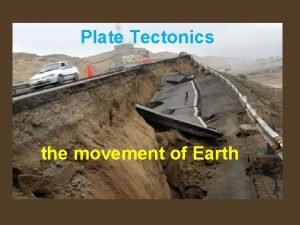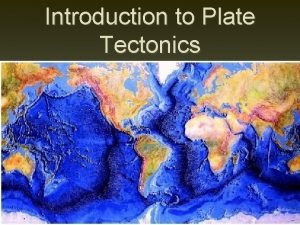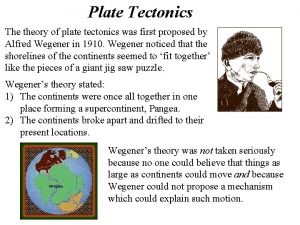Plate Tectonics Earths Layers The Earths rocky outer



























- Slides: 27

Plate Tectonics

Earth’s Layers The Earth's rocky outer crust solidified billions of years ago, soon after the Earth formed. This crust is not a solid shell; it is broken up into huge, thick plates that drift atop the soft, underlying mantle.

The Crust Middle • The outermost layer • 5 – 40 km thick • Made of Oxygen, Silicon, Aluminum

The Mantle • Layer of Earth between the crust and the core • Contains most of the Earth’s mass • Has more magnesium and less aluminum and silicon than the crust • Is denser than the crust Middle

The Core • Located below the mantle and to the center of the Earth • Believed to be mostly iron • Outer core is liquid (currents in this liquid produce Earth’s magnetic properties) • Inner core is solid iron (extremely high temperature and pressure keep it in a solid state)

Tectonic Plates

Plate Tectonics • • • Greek – “tektonikos” of a builder Pieces of the lithosphere that move around Each plate has a name Fit together like jigsaw puzzles Float on top of mantle like ice cubes in a bowl of water

Continental Drift 1. Alfred Wegener 1900’s 2. Continents were once a single land mass that drifted apart. 3. Fossils of the same plants and animals are found on different continents. 4. Called this supercontinent Pangea, Greek for “all Earth”. 5. 245 Million years ago 6. Split again – Laurasia & Gondwana 180 million years ago http: //members. enchantedlearning. com/subjects/astronomy/planets/earth/Continents. shtml

Evidence of Pangea

Mid-Ocean Ridge • The mid-ocean ridge curves like the seam of a baseball along the sea floor, extending into all of Earth's oceans.

Sea Floor Spreading

Sea Floor Spreading 1. Mid Ocean Ridges – underwater mountain chains that run through the Earth’s Basins 2. Magma rises to the surface and solidifies and new crust forms 3. Older crust is pushed farther away from the ridge

E Sea Floor Spreadingoor apart along both sides of the mid-ocean ridge as new crust is added.

Evidence for Sea-Floor Spreading New material is indeed erupting along the midocean ridge.

Subduction

How Plates Move http: //pubs. usgs. gov/gip/dynamic/unanswered. html

Different Types of Boundaries http: //pubs. usgs. gov/gip/dynamic/understanding. html

1. Divergent Boundary – plates are moving away from each other Arabian and African Plates Arabian Plate African Plate Red Sea

Divergent Boundary – Iceland North American Plate and Eurasian Plate http: //pubs. usgs. gov/gip/dynamic/understanding. html

Divergent Boundary - Oceanic http: //www. geology. com

Divergent Boundary - Continental http: //www. geology. com

2. Convergent Boundary – plates are moving toward each other Indian and Eurasian Plates Eurasian Plate Indian Plate

Convergent Boundary – Oceanic & Continental http: //pubs. usgs. gov/gip/dynamic/understanding. html & http: //www. geology. com

Convergent Boundary – Oceanic & Oceanic NOTE – PLATES ARE REVERSED http: //pubs. usgs. gov/gip/dynamic/understanding. html & http: //www. geology. com

Convergent Boundaries - Continental http: //pubs. usgs. gov/gip/dynamic/understanding. html & http: //www. geology. com

3. Transform Boundary –plates slide past each other San Andreas Fault, in California www. geology. com

Review • • • Name the 3 main layers of the Earth What is a tectonic plate? What was Pangea? What is Sea-Floor spreading? Name three different types of plate boundaries and one location on Earth for each one
 Inner core and outer core
Inner core and outer core Earth's layer foldable
Earth's layer foldable Layers of atmosphere
Layers of atmosphere Earths layer foldable
Earths layer foldable Blank plate tectonics map worksheet
Blank plate tectonics map worksheet Theory of plate tectonics
Theory of plate tectonics Plate tectonics
Plate tectonics Seafloor spreading material at trenches
Seafloor spreading material at trenches Candy bar plate tectonics
Candy bar plate tectonics Chapter 10 plate tectonics
Chapter 10 plate tectonics Evidence of the theory of plate tectonics
Evidence of the theory of plate tectonics Arthur holmes contribution to plate tectonics
Arthur holmes contribution to plate tectonics Chapter 8 plate tectonics
Chapter 8 plate tectonics Plate tectonics
Plate tectonics Plate tectonics webquest answers
Plate tectonics webquest answers Explain the theory of plate tectonics.
Explain the theory of plate tectonics. Plate tectonics interactive lab
Plate tectonics interactive lab Edible plate tectonics
Edible plate tectonics Driving force of plate tectonics
Driving force of plate tectonics Strombolian eruption
Strombolian eruption Plate tectonics
Plate tectonics Plate tectonics definition
Plate tectonics definition Plate tectonics
Plate tectonics Plates that move towards each other
Plates that move towards each other The plate tectonics theory states that:
The plate tectonics theory states that: Plate tectonics vs continental drift
Plate tectonics vs continental drift Chapter 8 plate tectonics
Chapter 8 plate tectonics Divergent or convergent
Divergent or convergent




